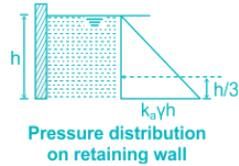Civil Engineering (CE) Exam > Civil Engineering (CE) Tests > Test: Earth Pressure at Rest - Civil Engineering (CE) MCQ
Test: Earth Pressure at Rest - Civil Engineering (CE) MCQ
Test Description
5 Questions MCQ Test - Test: Earth Pressure at Rest
Test: Earth Pressure at Rest for Civil Engineering (CE) 2025 is part of Civil Engineering (CE) preparation. The Test: Earth Pressure at Rest questions and answers have been prepared
according to the Civil Engineering (CE) exam syllabus.The Test: Earth Pressure at Rest MCQs are made for Civil Engineering (CE) 2025 Exam.
Find important definitions, questions, notes, meanings, examples, exercises, MCQs and online tests for Test: Earth Pressure at Rest below.
Solutions of Test: Earth Pressure at Rest questions in English are available as part of our course for Civil Engineering (CE) & Test: Earth Pressure at Rest solutions in
Hindi for Civil Engineering (CE) course.
Download more important topics, notes, lectures and mock test series for Civil Engineering (CE) Exam by signing up for free. Attempt Test: Earth Pressure at Rest | 5 questions in 15 minutes | Mock test for Civil Engineering (CE) preparation | Free important questions MCQ to study for Civil Engineering (CE) Exam | Download free PDF with solutions
Test: Earth Pressure at Rest - Question 1
The ratio of horizontal stress σh to vertical stress σv is ______
Detailed Solution for Test: Earth Pressure at Rest - Question 1
Test: Earth Pressure at Rest - Question 2
The retaining wall moves _______ during the active state of plastic equilibrium.
Detailed Solution for Test: Earth Pressure at Rest - Question 2
Test: Earth Pressure at Rest - Question 3
The major principal stress σ1 in _________ in passive state
Detailed Solution for Test: Earth Pressure at Rest - Question 3
Test: Earth Pressure at Rest - Question 4
Which the following is NOT an assumption of Rankine Theory?
Detailed Solution for Test: Earth Pressure at Rest - Question 4
Test: Earth Pressure at Rest - Question 5
Total active pressure due to dry backfill acting at h/3 above the base is directly proportional to _________.
Detailed Solution for Test: Earth Pressure at Rest - Question 5
Information about Test: Earth Pressure at Rest Page
In this test you can find the Exam questions for Test: Earth Pressure at Rest solved & explained in the simplest way possible.
Besides giving Questions and answers for Test: Earth Pressure at Rest, EduRev gives you an ample number of Online tests for practice
Download as PDF









 acting at a distance H/3 above the base of the wall.
acting at a distance H/3 above the base of the wall.
















